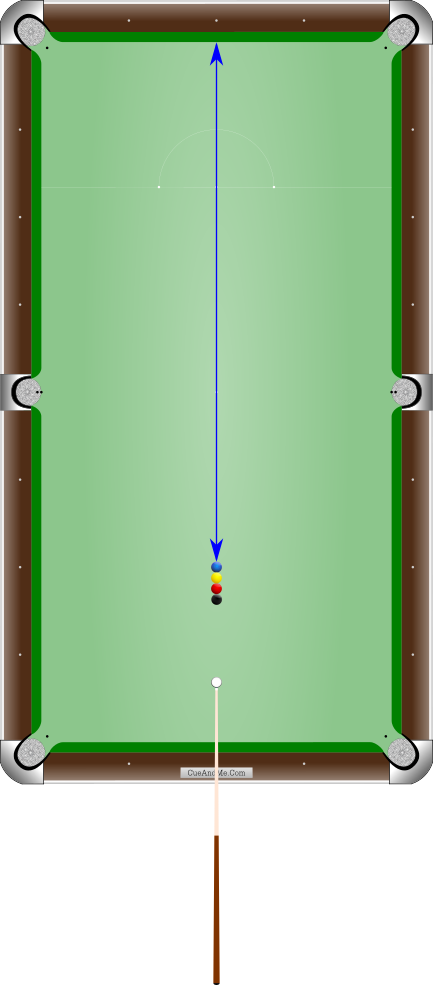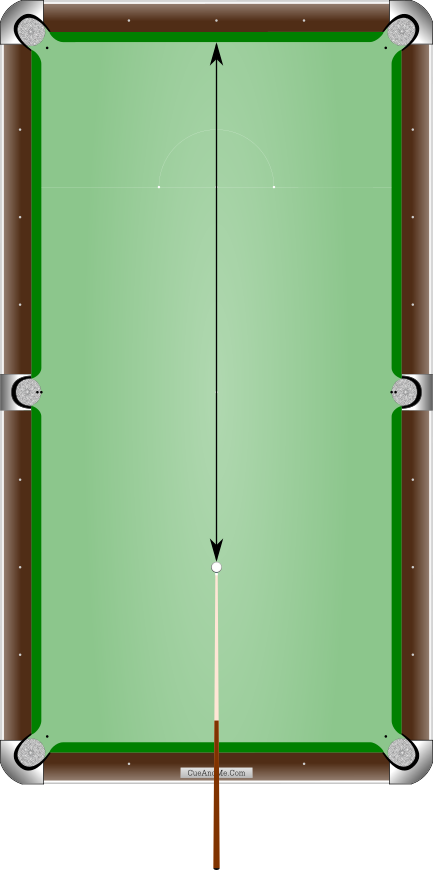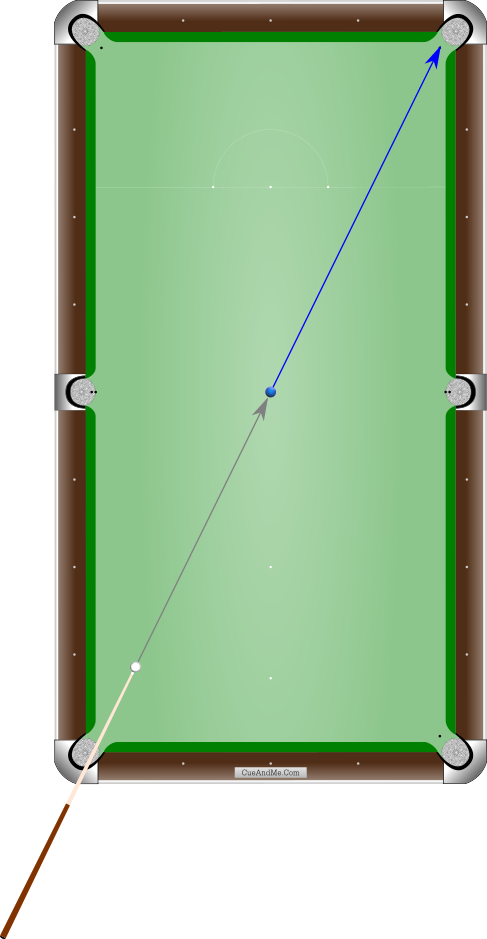TRAINING
You’ve learned the theory, patterns and other methods to apply to your game. The last step is to master it all through special practice routines.
Straight Shot Practice
First things first. Before you practice angled shots, it is important to make sure that your stroke is straight and that you can consistently pot straight shots. Otherwise, you cannot properly diagnose your mistakes when shooting angled shots.
Straight Cueing Action
There are several ways to groove a straight stroke, but the one I will recommend is the seemingly simple drill of striking a single ball lengthwise up the center of the table so that it rebounds off of the far cushion and returns to the tip of your cue. Pool players can place the ball on the foot or head spot, and snooker players can place the ball on the black, pink or brown spot. Perform your usual pre-shot routine, carefully stepping and bending into position, feathering the cue stick and striking the cue ball. Stay in position until the ball returns to your tip.
The ball not returning to your cue tip means that you aligned improperly and/or your cueing action is off. If your cueing action is not straight, the stick’s redirection can either send the ball along a different path or impart unwanted sidespin. If the ball is properly crossing the spots on its way up to the far cushion yet rebounds along a different line, it means that you imparted side spin to the ball.
Dr. Dave Alciatore calls this the “MOFUDAT” drill which is his acronym for “The Most Famous and Useful Drill of All Time.” Here is a video from his YouTube channel in which he uses the additional visual aid of a striped ball so that any side spin can be vividly seen.
Caution: Spots on a table could have been improperly placed, and not all table cushions are perfectly square and consistent. This can lead to misleading and frustrating results. One way to test a table is to place at least three touching balls in a straight line with one of the balls on the spot and all balls carefully aligned along the center line of the table.
Place the cue ball along the center line at least a few inches behind the line of balls and shoot the cue ball into the line of balls so that the ball on the spot travels up and back down the table.

If the table is set up properly, the ball should cross all spots in both directions and ultimately cross the original spot.
Long Straights
It is important to practice straight shots and especially long straight shots. The greater the distance from object ball to pocket and/or from cue ball to object ball, the more precision necessary to pot an object ball.
Since we simply aim the center of the cue ball directly at the center of the object ball, long straight shots enable us to isolate and practice the elements of sighting, alignment and stroke by removing the complicating factor of choosing aim. If we miss a straight shot it means that one or any combination of the three elements of sighting, alignment, and stroke were to blame. In truth, even if we were to pot the ball, one or any combination of the same three elements could be off, since mistakes can be offset by other mistakes. However, at the very least we can be sure that the mistake was not one of improper aim.
As long as the combined elements of sighting, alignment and stroke add up to potting consistency of the long straight shots, we can trust that our technique will work for angled shots as well. If we didn’t practice long straight shots, we couldn’t know if our aiming choices were to blame for our misses on angled shots.
You can mark and place long straight shots anywhere on the table. Because of the distances between balls and pocket, one of the most difficult long straight shots would have the object ball on the center spot and the cue ball as close to one corner pocket as possible. Shoot the object ball into the opposite corner pocket.



